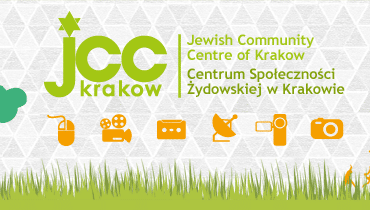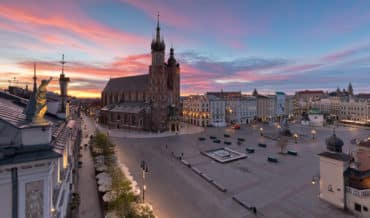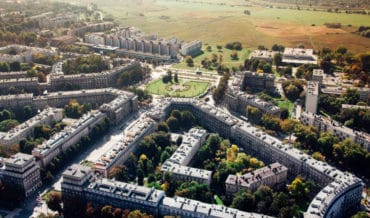A district of Krakow lying on the right bank of the Vistula. As a result of the First Partition of Poland in 1772, the Austrians took the entirety of Lesser Poland to the Vistula River, and Krakow became a border city. The area of today’s Podgórze also includes former villages near Krakow: Dębniki, Bonarka, Borek Fałęcki, Kobierzyn, Prokocim and others. In 1779, the Austrian engineer Karol de Hoefern developed an unrealized plan of the future city, which was to be built in the area of the existing settlements of Podgórze and Ludwinów. On the 24th February 1784, Emperor Joseph II elevated Podgórze to the rank of a free city and granted it a number of privileges. It was supposed to be a competitive city for Krakow. The rivalry did not take place in time – Poland fell, and then the Napoleonic wars. During the First Austrian Occupation, Podgórze was connected with Krakow by a permanent bridge, and was incorporated into Krakow for the first time in 1810. The group of historic urban buildings covers Limanowskiego, św. Benedykta, Rękawka, Zamoyski, Krakus and Węgierska, as well as the foothill market and Powstańców Śląskich and Kalwaryjska square. Podgórze is distinguished by several interesting historic buildings, such as: the Mateczny Spa Complex, the palace and park complex in Prokocim, the manor house and park in Piaski Wielkie, the manor house, park, granary, farm in Soboniowice, Park Wojciech Bednarski, the area of the Krakus Mound. Podgórze is a very industrialized part of Krakow, there are Krakowskie Zakłady Elektroniczne, Krakowska Fabryka Kabli i Maszyn Kablowych S.A., and Krakowskie Zakłady Bonarka.
Suggested
Suggested contents and articles.
Suggested Contents
The Jewish Community Centre of Krakow focuses on ensuring growth and cultural development of the Jewish community in Krakow. Through organising various events and activities, it brings together people of Jewish background as well as those simply interested in Jewish culture, religion and traditions. Regularly the JCC hosts exhibitions, festivals,
- Community, Places to visit
- January 16, 2017
Contents1 History1.1 Origins of Krakow Old Town1.2 Golden era1.3 Modern times2 Landmarks of Krakow Old Town2.1 Krakow Main Square2.2 Wawel Hill, Grodzka Street and All Saints’ Square3 What to do in Krakow Old Town? The area of today’s Krakow Old Town (in Polish Stare Miasto) actually mirrors the territories of the
- Attractions, Places to visit
- October 28, 2016
Contents1 Ideal proletarian city1.1 Central Square in Nowa Huta1.2 Lenin Steelworks1.3 Secular city2 Nowa Huta today2.1 Historical Museum of Krakow2.2 PRL Museum Nowa Huta is today the easternmost district of Krakow. Conceived in the late 1940s as a separate city, it was a realisation of the Stalinist utopia. The city developed
- Places to visit
- October 25, 2016
Comments
All comments.
Comments


